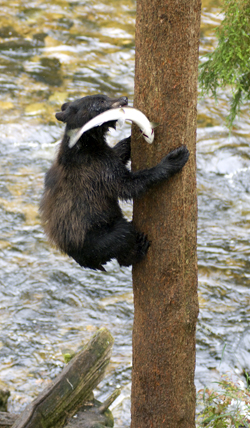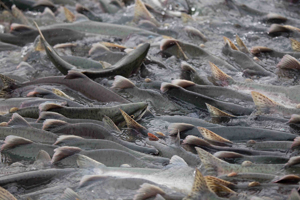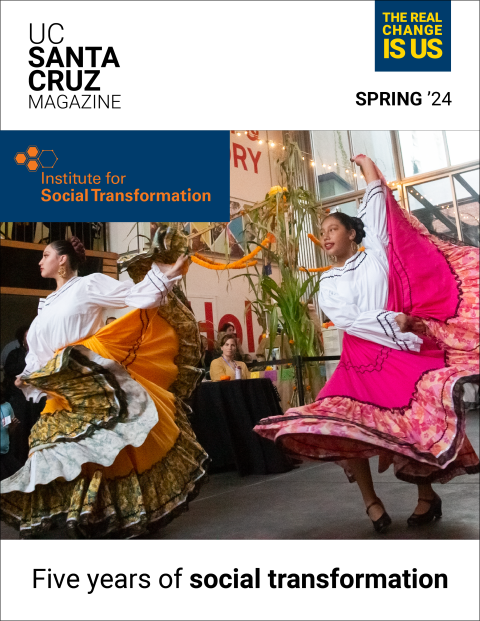A group of conservation biologists led by a researcher from UC Santa Cruz and Canada’s Raincoast Conservation Foundation has proposed limiting the fishing of Pacific salmon off British Columbia in order to improve the ecosystems of protected coastal areas where spawning occurs and help coastal economies.
The proposal is published in the journal Conservation Letters.
The idea is to limit fishing to allow more salmon to migrate to their native streams to spawn, said Chris Darimont, Raincoast scientist and a post doctoral researcher in the environmental studies department at UC Santa Cruz.
"Taking less might mean more benefits to ecosystems and humans," Darimont said.
More spawning salmon will mean two things: greater benefits to a wide variety of wildlife that use salmon and increased economic opportunities that value salmon more alive than dead, Darimont said.
Darimont, the paper's lead author is joined by Chris Wilmers, assistant professor of environmental studies at UCSC, and researchers from the Raincoast Conservation Foundation, UC Berkeley, University of Calgary and Simon Fraser University.
Darimont explained that decades of fisheries exploitation, habitat change and other human-caused harms have had a tremendous impact on salmon and the terrestrial ecosystems where they spawn – even in protected areas. Restoring salmon to these areas would mean increased food for more than 100 species in the food web - species for which in many cases protected areas were created. Even plants and trees along the spawning channels would see greater benefit from more of the fishy "fertilizer."
The researchers propose reductions in fishing that start with pink and chum salmon because the impact on commercial fishing wouldn't be as great as it would be with the more valuable sockeye, Chinook and coho salmon.
The authors admit that policy makers in the U.S. and Canada might regard their proposal as radical but they argue that it has the potential to yield economic and management benefits.
‘Allowing salmon to evade fishing nets has the potential to support a more diverse salmon industry," said Wilmers. "A case in point is the salmon-reliant ecotourism. Eeach year, thousands of people come to watch grizzly bears, eagles, and the salmon themselves," Wilmers said.
Researchers began with the question: Are protected areas on land that host highly exploited salmon runs, such as state and national parks and ecological reserves, truly protected?
Darimont said the proposal is consistent with a new Canadian federal government policy – the "Wild Salmon Policy" – that explicitly recognizes that non-human users of salmon – including those on land and in fresh water streams – ought to be considered in fisheries management.





